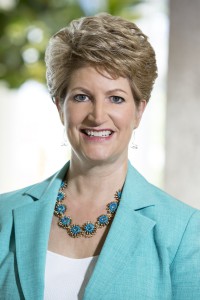
In this article written by Olivia Barrow published in the June 7, 2017 editions of the Sacramento Business Journal and the San Francisco Business Times, Monica Majors, Sutter Health Plus vice president of strategic sales and marketing, discusses the importance of employers using a marketer’s approach to engage all generations on healthcare benefits that work for everyone.
California is arguably the most diverse state in the entire nation, with many businesses employing people of all ages. And in the current healthcare environment — with rising costs, changing legislation, and increasing complexity — employers have the opportunity to engage a multi-generational workforce on healthcare benefits.
“An employer can’t take a one-size-fits-all approach to marketing healthcare benefits to employees,” said Monica Majors, vice president of strategic sales and marketing at Sutter Health Plus. “Employees could end up selecting a benefit plan that isn’t right for them or their families, or they may not fully appreciate the benefits offered by their employer.”
“HR professionals can benefit from taking a marketer’s approach to developing engagement plans,” continued Majors. “Well before implementing tactics, marketers segment each audience and use consumer research and feedback to understand their wants, needs, and motivations.”
Majors shared ways employers can develop an employee engagement/marketing strategy that effectively addresses the needs of employees and their families.
Understand generational differences
To build a marketing plan that meets the needs of a cross-generational workforce, business decision-makers must understand the various ways generations typically access healthcare.
“Each generation has different expectations from their doctors and makes healthcare decisions differently; and while each generation is familiar with technology, they use it to process information differently,” Majors said.
Millennials. Younger healthcare consumers, born between 1981 and 2000, often seek health information online before consulting doctors or other professionals.
“Millennials expect their healthcare experience to be like shopping on Amazon,” Majors said. “This includes providing integrated tools such as online appointment scheduling, portals to manage benefits, and apps to help understand medical costs.”
While millennials value personal relationships with healthcare providers, if they have a negative experience they are more likely to make a quick switch. And they’re less likely to care about health insurance brands, so employers should highlight the features, benefits and conveniences of health plans over the brand name, Majors said.
Many millennials are drawn to the lower monthly premiums available with high-deductible health plans (HDHPs) that are compatible with health savings accounts (HSAs). And with HSAs, individuals “own” the account so if they end up changing jobs (which millennials often do) they can take the account with them.
Gen X. Members of Generation X (Gen X), born between 1965 and 1980, shop for healthcare the same way they shop for retail goods and services — they pay attention to brands and prices.
“Gen Xers are more pessimistic about healthcare, particularly with impending changes to the Affordable Care Act,” Majors noted. “Compared to the baby boomer generation, Gen X members are more concerned about access to healthcare, but less likely to proactively manage their health.”
“The older members of Gen X are moving into the age where they are beginning routine preventive health procedures, like mammograms and colonoscopies. Employers should personalize their offerings to Gen Xers with this in mind and then market these features and benefits,” Majors said.
Baby boomers. Baby boomers, born between 1946 and 1964, didn’t grow up with the internet, but they have learned to embrace new technology. They actively seek tech-savvy ways to connect with their doctors. They are high users of social networking sites and consider reviews and ratings when choosing a provider, according to a recent study published in the Journal of the American Medical Association.
“Word-of-mouth recommendations through Facebook resonate well with the boomers,” Majors added. “They value quality of care and reputations. They’re more likely to recognize the top names of insurance plans and providers and may make their decisions based on the reputations of these brands.”
Put yourself in the employee’s shoes
Navigating health plan benefits can be overwhelming and confusing for many people, regardless of age. Employees need to understand what they signed up for and how plans work.
“Employers should use simple and easy-to-understand examples or stories to explain the complexities of benefit plan designs,” Majors said. “Health plans often have helpful materials available upon request, such as collateral explaining details about HDHPs, out-of-pocket maximums, and family deductibles.”
At times the lingo itself confuses employees. “Those of us in the insurance industry speak another language,” Majors explained. “It wasn’t built for the consumer. It was built for insurance companies and regulators.” Employees will appreciate reading materials that are explained in everyday language and simple terms. In cases where this isn’t possible, employers can provide employees with a glossary of terms (often published by insurance companies).
By developing segmented marketing strategies that appeal to a multi-generational workforce, businesses will be more successful in attracting and retaining employees with health plans and benefits that work for everyone.

